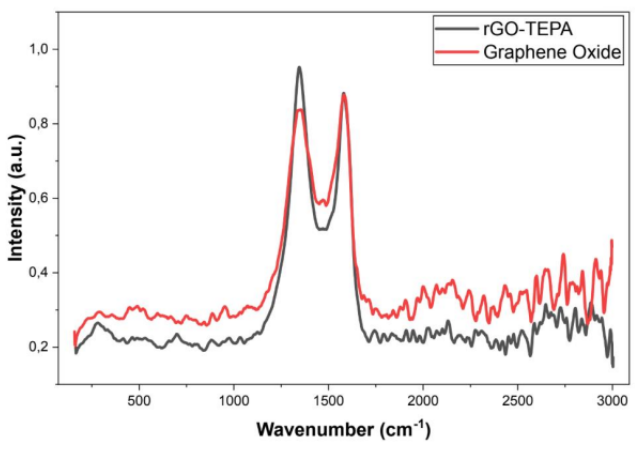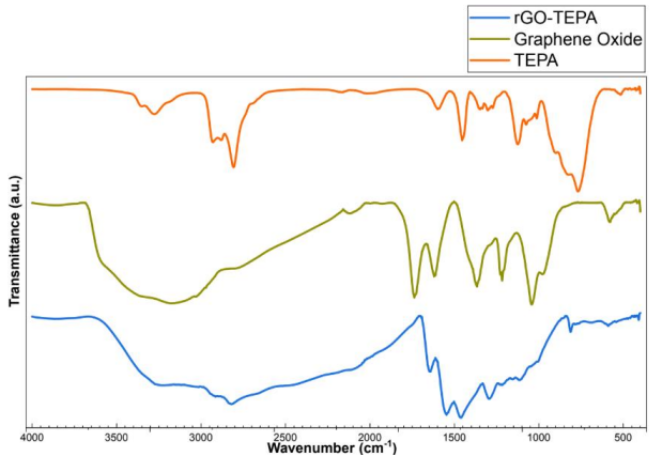Tetraethylene Pentamine Functionalized Reduced Graphene Oxide (rGO-TEPA)
- SKU:
- NG10GNPW0957
- Shipping:
- Calculated at Checkout
NEW
Frequently bought together:
Description
1 gram/145 €
5 grams/640 €
25 grams/1870 €
100 grams/3680 €
500 grams/9840 €
1000 grams/15750 €
Please contact us for quotes on larger quantities !!!
Tetraethylene Pentamine Functionalized Reduced Graphene Oxide (rGO-TEPA)
Tetraethylene Pentamine Functionalized Reduced Graphene Oxide (rGO-TEPA) offers enhanced surface reactivity and dispersibility due to its abundant amine groups and high surface area. This functionalized nanomaterial is ideal for advanced applications in composites, coatings, and environmental remediation, where chemical bonding and surface modification are critical.
Technical Properties:
| Form | Powder | ||||
| Color | Black | ||||
| Linear Formula | CxOyHz | ||||
| Elemental Analysis ( Atomic %) | C | N | O | Na | C (Residual) |
| 71.6 | 13.8 | 11.2 | 3.0 | 0.4 |
Raman Analysis

FTIR Analysis

Applications:
- Composite Reinforcement: Amino functional groups and high surface reactivity promote strong interfacial bonding with polymer, elastomer, and metal matrices; improves mechanical strength and electrical/thermal conductivity.
- Surface Modification and Adhesion Promotion: TEPA amines enable covalent or strong ionic interactions with substrates, enhancing adhesion in coatings, adhesives, and resin systems.
- Dispersion Stabilization: Amine functionality improves compatibility and stability in aqueous and many organic solvents and polymer solutions; yields homogeneous distribution in films and inks.
- Sensors and Bio‑immobilization: Surface amines provide active sites for conjugation of biomolecules or chemical receptors; useful for gas, chemical, and biosensor functionalization.
- Electrode and Energy‑Storage Modification: Incorporation of amine‑functional rGO into electrodes can enhance electrochemical stability, capacitance, and charge transport.
- Coatings and Corrosion Protection: Functional rGO layers improve barrier properties and substrate binding, contributing to corrosion resistance on metal surfaces.
- Catalysis and Catalyst Supports: Surface amine ligands facilitate immobilization and stabilization of metal nanoparticles; suitable for heterogeneous catalysis applications.
- Thermal Management in Composites: Improves interfacial heat transfer and overall thermal conductivity for TIMs, heat spreaders, and thermal management solutions.
- Membranes and Separation (Functional Modification): Amine functionality enables selective interactions and tuning of hydrophilicity/hydrophobicity, enhancing filtration and separation performance.














